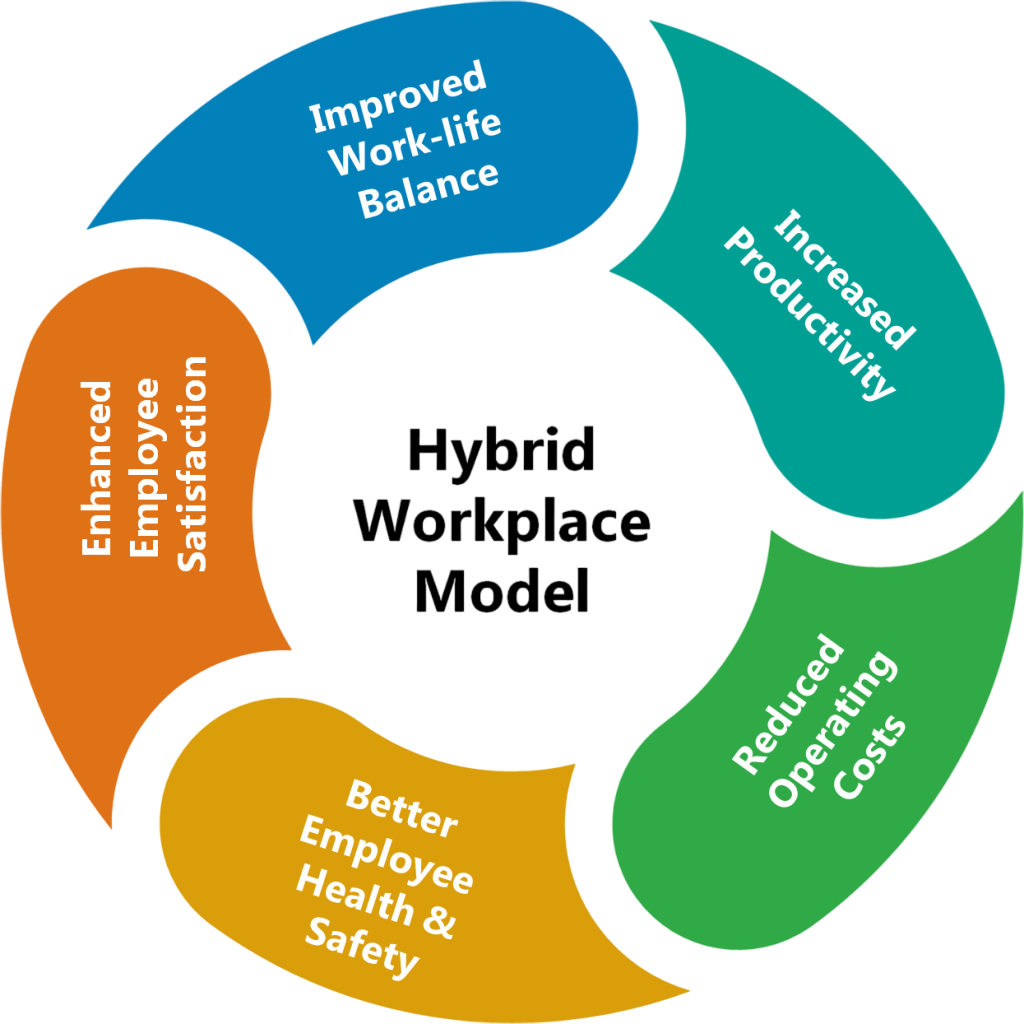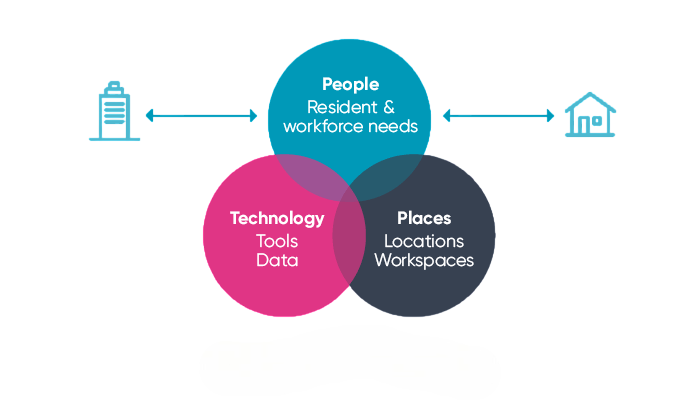
- The Rise of Flexible Work Models
- What is a Hybrid Work Model?
- History and Rise Post-COVID
- Types of Hybrid Models
- Benefits for Employees
- Benefits for Employers
- Technological Support
- Communication Tools
- Productivity Metrics
- Common Challenges
- Best Practices
- Conclusion
The Rise of Flexible Work Models
In recent years, the traditional nine-to-five office model has undergone a dramatic transformation. Companies across the globe are embracing flexible work arrangements that better meet the needs of both employees and employers. Among these evolving models, the hybrid work model has emerged as a leading structure, blending the benefits of in-office and remote work, with Softskills Training playing a key role in helping employees adapt and thrive in this flexible environment. As technology continues to advance and workforce expectations evolve, understanding the hybrid work model is crucial for businesses looking to attract and retain top talent while remaining competitive in the market.
What is a Hybrid Work Model?
A hybrid work model is a flexible working arrangement that allows employees to split their time between working remotely and working from a physical office. This approach offers a balance between the collaborative benefits of in-person work and Coding and Decoding the autonomy of remote work. Hybrid models vary across organizations some employees may work in the office a few days a week, while others may only attend in person for critical meetings or project milestones.

This model emphasizes flexibility, adaptability, and trust between employers and employees. The obvious remote work benefits, such less commute, improved work-life balance, and more autonomy, are among the main factors contributing to its popularity. Organisations may create a more inclusive and productive work environment by embracing the remote work benefits and utilising technology. Prioritising the remote work benefits is crucial for long-term success as the nature of work continues to change.
History and Rise Post-COVID
While remote work was gaining traction before 2020, the COVID-19 pandemic accelerated its adoption at an unprecedented pace. Organizations worldwide were forced to adopt remote work overnight to ensure business continuity. What began as a temporary solution evolved into a permanent shift in workplace norms.
- The success of remote work during the pandemic demonstrated that many jobs could be performed effectively without being tied to a specific location. As a result, many companies began to reconsider the necessity of daily office attendance.
- The hybrid model emerged as a compromise, offering the flexibility of remote work Forefront of Bridging the Technology with the opportunity for in-person collaboration when necessary.
Notable companies like Microsoft, Google, and Apple have implemented hybrid work policies, further validating the model’s viability. The post-COVID era has solidified the hybrid work model as a cornerstone of modern workforce management. But there are obstacles to overcome, such as unequal access to resources, cybersecurity threats, and sustaining team collaboration. A key factor in facilitating smooth team collaboration across locations is utilising the appropriate technology and communication tools. Businesses need to establish clear regulations, cultivate a strong culture, and guarantee that team collaboration is maintained whether workers are working in-person or remotely if they want to prosper.
Do You Want to Learn More About Aptitute and reasoning? Get Info From Our Aptitute and reasoning certification Training Today!
Types of Hybrid Models
There are several variations of the hybrid work model, each designed to meet specific organizational goals and employee needs:
- Remote-First Model: The default mode of operation is remote work, with the office serving as a secondary option for meetings and collaboration.
- Office-First Model: Employees are expected to work primarily from the office but have the flexibility to work remotely when needed.
- Split-Week Model: Employees split their week between remote work and office work. For example, they may work remotely on Mondays and Fridays and come to the office Tuesday through Thursday.
- Team-Based Model: Specific teams or departments determine their own hybrid schedules based on their workflow and collaboration needs.
- Flexible Model: Employees have complete autonomy to choose when and where they work, with minimal restrictions.
Each of these models has its pros and cons, and the optimal choice depends on the organization’s culture, industry, and workforce dynamics.
Benefits for Employees
The hybrid work model offers numerous benefits to employees, significantly improving their work-life balance and overall job satisfaction:
- Flexibility: Employees can tailor their schedules to fit personal commitments and peak productivity times.
- Reduced Commute: Less time spent commuting leads to increased free time and decreased stress.
- Improved Work-Life Balance:The ability to work from home enables employees to better manage family responsibilities and personal well-being.
- Increased Autonomy: Employees gain more control over their work environment and daily routines.
- Enhanced Productivity: Working in a preferred environment can boost focus and efficiency.
These advantages contribute to higher employee engagement, reduced burnout, and stronger retention rates.
Would You Like to Know More About Aptitute and reasoning? Sign Up For Our Aptitute and reasoning certification Training Now!
Benefits for Employers
Employers also stand to gain significantly from implementing a hybrid work model:
- Cost Savings: Reduced office space and utility costs can lead to substantial financial savings.
- Wider Talent Pool:Organizations can hire talent from a broader geographic area, including regions with lower labor costs.
- Increased Productivity: Many companies report higher productivity levels due to reduced distractions and increased employee satisfaction, benefits that are often supported by Softskills Training to enhance communication and collaboration in hybrid teams.
- Business Continuity: A hybrid model provides greater resilience during disruptions such as natural disasters or health crises.
- Positive Employer Branding: Offering flexible work options enhances the company’s reputation and attractiveness to potential hires.
Ultimately, the hybrid model supports long-term business sustainability and innovation.
Technological Support
Strong technological assistance is essential to a hybrid work model’s success. Employees may safely access data and apps from any location thanks to cloud computing. Project management and communication across geographical boundaries are made simple by GATE Exam Eligibility Criteria collaboration platforms like Zoom, Slack, and Microsoft Teams. VPNs, multi-factor authentication, and endpoint protection are examples of cybersecurity solutions that assist protect enterprise data.

When working remotely, having dependable hardware such as laptops, webcams, headsets, and steady internet connections is crucial to productivity. Furthermore, having a competent IT support staff guarantees prompt resolution of any technical problems. By bridging the gap between in-office and remote work, these tools help teams remain productive and connected.
Communication Tools
Effective communication is vital in a hybrid work environment. Organizations must utilize a range of tools to support various communication needs:
- Video Conferencing: Tools like Zoom and Google Meet facilitate face-to-face interactions.
- Instant Messaging: Platforms such as Slack or Microsoft Teams support real-time conversations.
- Email: Still a critical tool for formal communications and documentation.
- Project Management Tools: Trello, Asana, and Monday.com help teams track progress and deadlines.
- Knowledge Management Systems:Platforms like Confluence and Notion centralize information for easy access.
Regular check-ins, virtual meetings, and clear communication protocols help maintain transparency and collaboration. Even though it has advantages like better productivity and work-life balance, Leadership Theories it can be difficult to keep up a positive office culture. Leaders must discover innovative strategies to reinforce office culture in both physical and virtual environments because less in-person encounters may affect employee engagement and team bonding. In a hybrid setting, businesses can maintain and improve their office culture culture by placing a high priority on communication, diversity, and shared values.
Productivity Metrics
Measuring productivity in a hybrid work model requires a shift from traditional time-based metrics to outcome-based evaluations:
- Task Completion Rates: Tracking how many tasks or projects are completed on time.
- Quality of Work: Assessing the accuracy, creativity, and impact of deliverables.
- Employee Engagement: Regular surveys and feedback mechanisms to gauge morale and motivation.
- Collaboration Levels: Monitoring participation in meetings and team activities.
- Customer Satisfaction: Measuring client feedback and response times.
Employers must focus on results rather than hours worked to accurately assess productivity in a hybrid setting.
Gain Your in Aptitude and reasoning Training by Enrolling in Our Aptitude and reasoning training Now!
Common Challenges
Although there are numerous advantages to the hybrid work model, there are drawbacks as well that businesses need to consider. Compared to their coworkers in offices, remote workers may feel unfairly excluded from important decisions or prospects for advancement. It might be challenging to plan meetings and BSc Nursing Growth Path tasks across time zones and locations. Another issue is technology gaps, since not all workers have access to dependable internet or the right tools at home. Additionally, because remote work involves less controlled network environments, there is a greater chance of cybersecurity risks. Lastly, there is a chance that team cohesiveness and corporate culture will deteriorate when face-to-face interactions decline. Companies require clear strategy, constant communication, and frequent assessment of their hybrid work practices in order to overcome these challenges.
Preparing for Aptitude and reasoning Job? Have a Look at Our Blog on Aptitude and reasoning training To Acte Your Interview!
Best Practices
To maximize the benefits and minimize the drawbacks of a hybrid work model, organizations should adopt the following best practices:
- Set Clear Policies: Define expectations for attendance, availability, and deliverables.
- Foster Inclusivity: Ensure remote employees have equal access to information, opportunities, and recognition.
- Invest in Training: Provide resources and training on remote collaboration, cybersecurity, and productivity tools.
- Encourage Flexibility: Allow teams to design their own schedules within defined guidelines.
- Monitor Well-Being: Promote mental health resources and maintain regular check-ins.
Adopting these practices can help create a resilient, adaptive, and productive hybrid workplace.
Conclusion
The hybrid work model is not just a temporary trend but a strategic evolution in how organizations operate. By combining the best of remote and in-office work, this model addresses the diverse needs of a modern workforce. It promotes flexibility, enhances productivity, and supports business resilience. However, its success depends on thoughtful implementation, supported by the right technology, clear communication, and a culture of trust and inclusivity. As businesses continue to adapt in a post-pandemic world, the hybrid work model stands as a powerful framework for future success. Adopting this paradigm promotes work life balance and employee well-being, both of which raise morale benefits that are further enhanced through Softskills Training focused on communication, time management, and emotional intelligence. Additionally, it gives businesses the chance to access a larger talent pool that isn’t restricted by geography. To ensure smooth cooperation and data protection, investments in digital technologies and cybersecurity are essential. In order to handle new issues and improve hybrid policies, leaders must constantly solicit input. In the end, the hybrid work paradigm promotes agility, which increases a company’s capacity to adjust to upcoming challenges.


